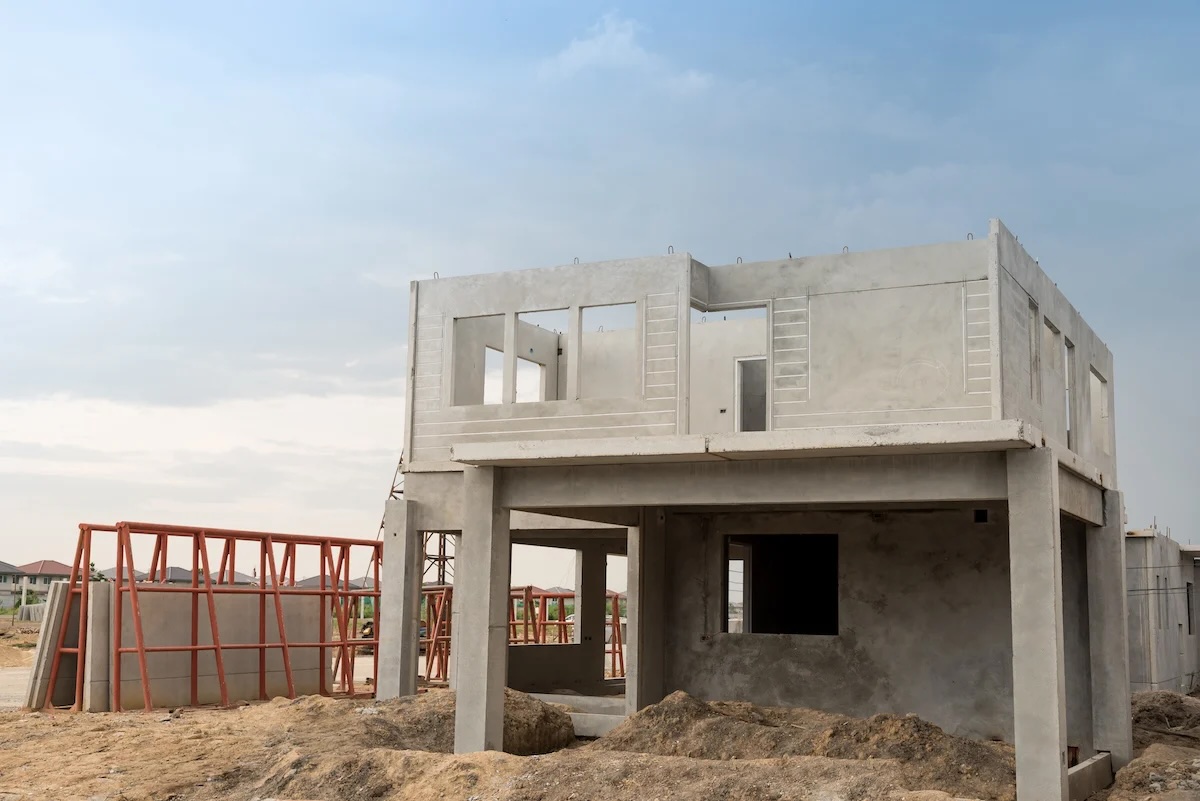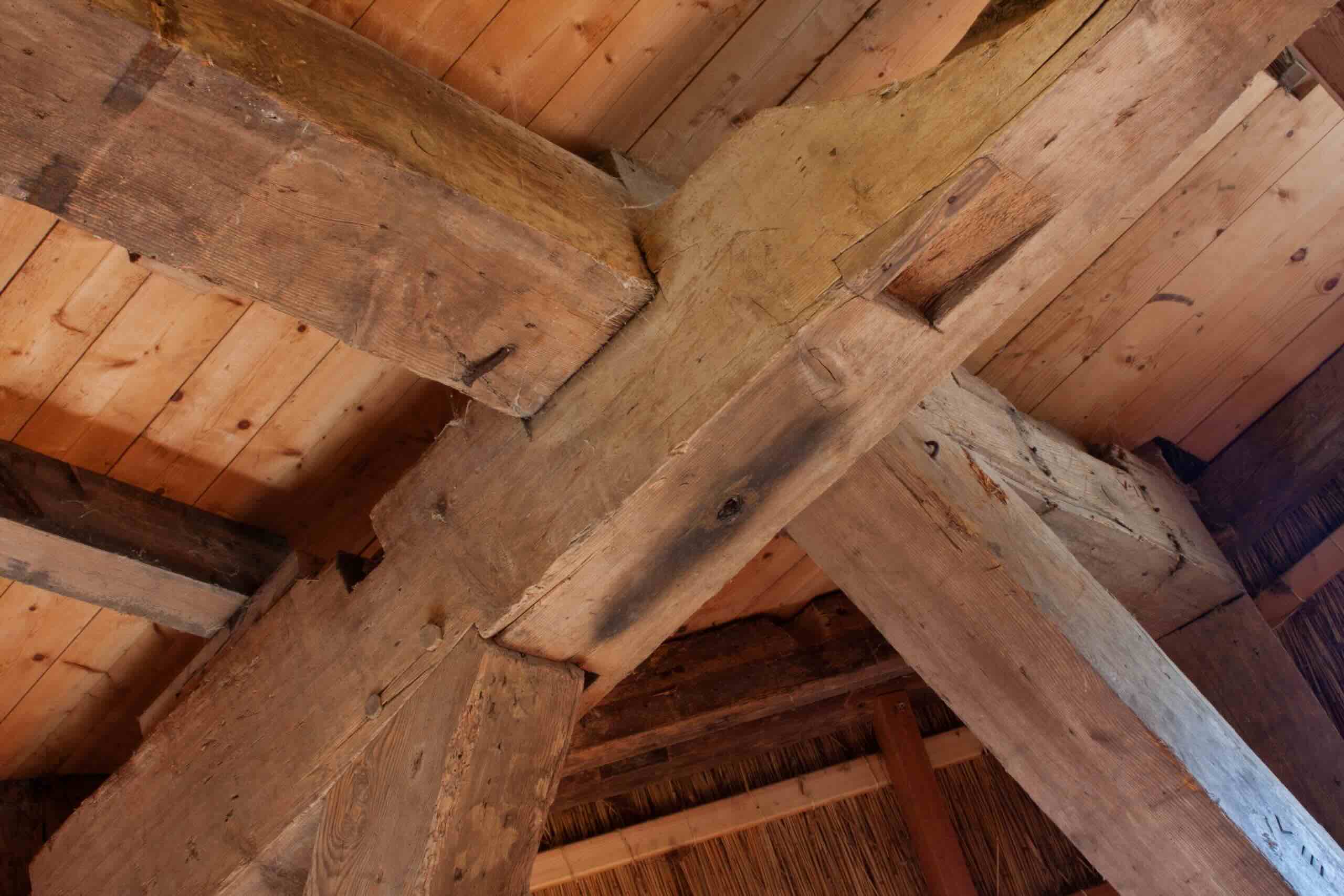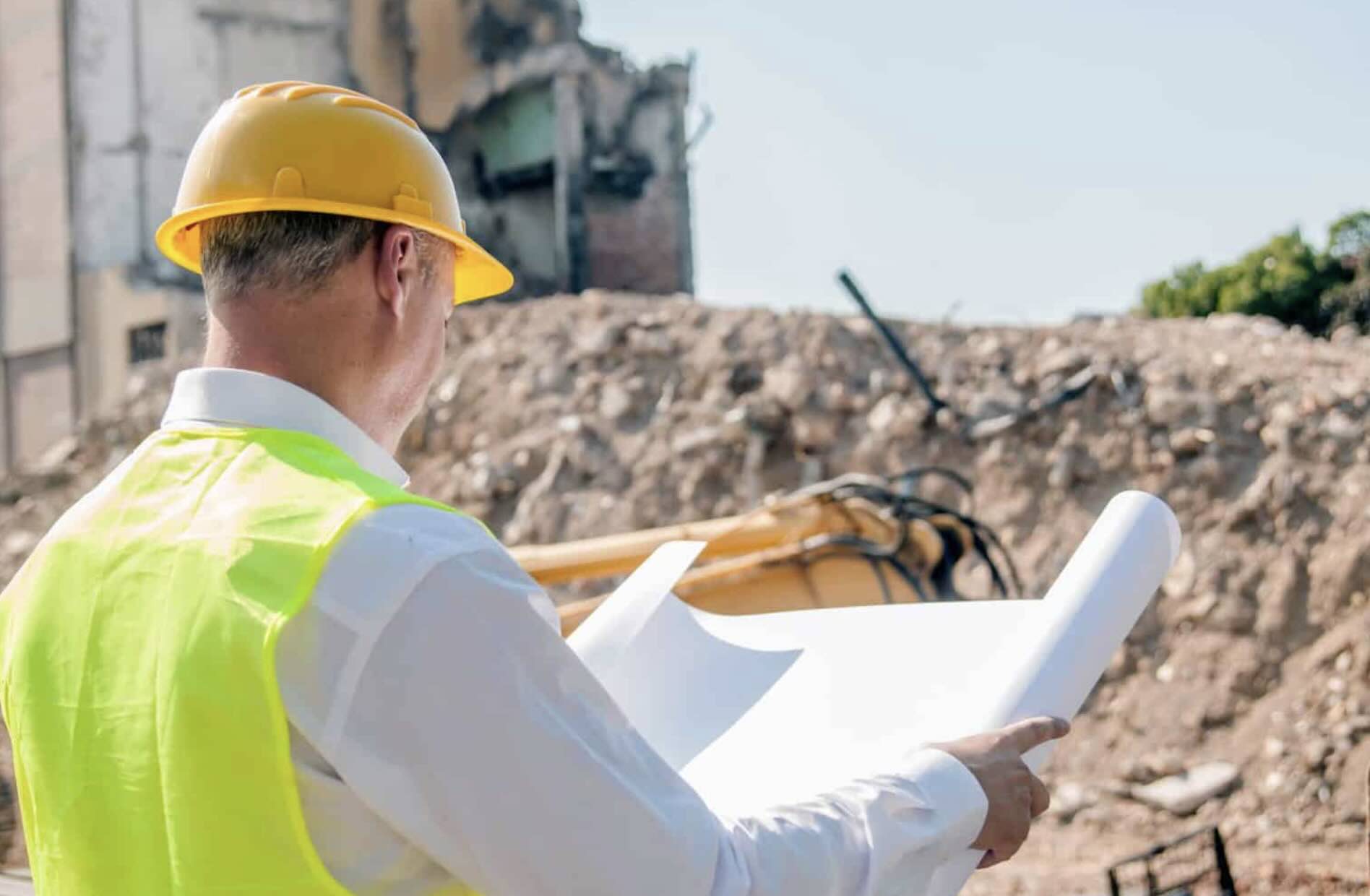Home>diy>Building & Construction>What Type Of Construction Is Stonehenge


Building & Construction
What Type Of Construction Is Stonehenge
Modified: January 23, 2024
Discover the ancient mystery of Stonehenge and its unique building construction techniques. Uncover the secrets behind the iconic stone structure that has stood the test of time.
(Many of the links in this article redirect to a specific reviewed product. Your purchase of these products through affiliate links helps to generate commission for Storables.com, at no extra cost. Learn more)
Introduction
Stonehenge, a prehistoric monument located in Wiltshire, England, remains one of the most captivating and mysterious landmarks in the world. The monument consists of a circular setting of large standing stones, some of which reach up to 30 feet in height and weigh several tons. The origin and purpose of Stonehenge have puzzled archaeologists and historians for centuries, giving rise to countless theories about its construction techniques.
Believed to have been built between 3000 and 2000 BCE, Stonehenge has endured the test of time and continues to intrigue visitors with its sheer presence and architectural beauty. As one of the most famous construction projects of the ancient world, it serves as a testament to the intelligence and resourcefulness of our ancestors in manipulating massive stones and creating structures that have withstood millennia of natural and human-induced challenges.
In this article, we will delve into the history of Stonehenge, explore the theories on its construction techniques, examine the organization and alignment of the stones, discuss possible construction methods, and consider the role of technology and tools in its creation.
Join us on this captivating journey as we uncover the secrets of Stonehenge, its enigmatic construction, and its enduring significance.
Key Takeaways:
- Stonehenge, a prehistoric marvel, showcases the remarkable ingenuity and resourcefulness of ancient builders in manipulating massive stones and creating enduring architectural wonders that continue to captivate and intrigue us today.
- The construction of Stonehenge remains shrouded in mystery, with theories ranging from human labor and simple tools to the possibility of water transport and leveraging natural topography. Ongoing research and technological advancements offer glimpses into the techniques and tools employed by our ancestors in creating this enigmatic monument.
Read more: What Are The Types Of Construction
History of Stonehenge
The history of Stonehenge dates back over 5,000 years. Initially, the site was a simple circular ditch and bank, known as a henge monument, which was constructed around 3000 BCE. This early phase of Stonehenge consisted of a circular earthwork enclosure with an internal diameter of approximately 110 meters.
However, the iconic stone structure we see today was not erected until around 2500 BCE during the later Neolithic period. The monument underwent several major construction phases, with different structures being added over time.
One of the distinctive features of Stonehenge is its circular arrangement of large sarsen stones, which were transported from the Marlborough Downs, located approximately 20 miles away. These huge stones, some weighing up to 30 tons, were carefully arranged in a horseshoe and circular pattern. The stones were held in place by mortise and tenon joints, which allowed them to interlock securely.
Inside the sarsen circle, there are smaller bluestones, which are believed to have been transported from the Preseli Hills in Wales, over 150 miles away. These bluestones, measuring about 3 to 4 meters in height, were arranged in two concentric circles or horseshoes within the larger sarsen circle.
Stonehenge went through various phases of construction and modification, with the bluestones being rearranged and additional stones being added over time. The final major phase of construction occurred around 1500 BCE when the monument took its current form.
Over the centuries, Stonehenge has served different purposes, including as a burial ground and a ceremonial site. It is believed to have been a place of great spiritual and ritual significance to the ancient people who built it. Today, it continues to be an important archaeological and cultural site, attracting millions of visitors each year.
Theories on Construction Techniques
The construction techniques used to build Stonehenge have long been a subject of fascination and speculation. While the exact methods employed by the ancient builders remain a mystery, several theories have been proposed based on archaeological evidence and comparative studies.
One theory suggests that Stonehenge was built using a combination of human labor and simple tools such as stone hammers, wooden levers, and ropes. This theory argues that the stones were quarried nearby and transported to the site using sledges or timber platforms. The ramps made of earth and timber would have been used to lift the stones into position.
Another theory proposes that Stonehenge was constructed using a process called “stone rowing.” This technique involves tilting the stones onto log rollers and gradually rocking them back and forth to move them horizontally. The stones would then be lifted using a wooden A-frame and placed on top of the supporting stones.
Some researchers believe that the ancient builders may have used a combination of both techniques. The larger sarsen stones, with their immense weight, may have been moved using the stone rowing method, while the smaller bluestones might have been transported using sleds or rollers.
Recent research has also suggested the possibility of using water to move the stones. It is speculated that the builders may have created a system of canals or dug channels filled with water to float the stones. This hydrological approach would have allowed them to transport the stones more easily over long distances.
Additionally, some theories propose the involvement of supernatural or extraterrestrial forces in the construction of Stonehenge. These hypotheses suggest that the stones were magically transported or even brought from another planet. While these ideas may be intriguing, they lack sufficient supporting evidence.
Despite the numerous theories put forward, the true construction techniques used at Stonehenge may forever remain a mystery. However, ongoing archaeological studies and advances in technology continue to shed light on this ancient marvel, bringing us closer to understanding the remarkable achievements of our ancestors.
Blue Stones and Sarsen Stones
One of the fascinating aspects of Stonehenge is the presence of two distinct types of stones: the blue stones and the sarsen stones. These stones play a crucial role in the construction and overall appearance of the monument.
The blue stones, each weighing several tons, are believed to have been transported from the Preseli Hills in Wales, approximately 150 miles away. They are predominantly made of a volcanic rock called dolerite, which gives them a bluish hue when exposed to the elements. It is still not entirely clear how the ancient builders managed to transport these massive stones over such a long distance. The prevailing theory is that they were moved using a combination of human labor, sledges, and rollers.
The sarsen stones, on the other hand, are local sandstone blocks that were quarried from the Marlborough Downs, about 20 miles from the Stonehenge site. These stones are even more impressive in size, with some reaching up to 30 feet in height and weighing around 25 tons. The sarsen stones were meticulously shaped and placed upright, forming the iconic trilithon arches and the larger outer circle of Stonehenge.
The process of quarrying and shaping the sarsen stones would have required immense effort and skill. The builders likely used stone hammers and wooden mallets to quarry the stones from the bedrock. They would then have used chisels and other hand tools to shape them into the desired form, taking into account the precise angles and dimensions needed to create the arches and circular arrangement.
Once the sarsen stones were prepared, they were transported to Stonehenge using a combination of sledges, wooden rollers, and possibly water-based transport. The placement of these massive stones required careful alignment and interlocking joints to ensure stability and strength. Mortise and tenon joints were used, where a protruding piece of stone (the tenon) was fitted into a hole (the mortise) in another stone, creating a secure connection.
The use of both the blue stones and the sarsen stones in the construction of Stonehenge highlights the immense planning and effort involved in creating this ancient monument. The transport and placement of these massive stones speaks to the ingenuity and determination of the ancient builders, whose accomplishments continue to awe and inspire us today.
Stonehenge is a prehistoric monument in Wiltshire, England, consisting of large standing stones arranged in a circular pattern. It is believed to have been constructed during the late Neolithic period and early Bronze Age, around 3000-2000 BC.
Organization and Alignment of Stonehenge
The organization and alignment of the stones at Stonehenge is a testament to the precision and careful planning of its builders. The monument is arranged in a circular pattern with several distinct components that contribute to its unique layout.
At the center of Stonehenge is the horseshoe-shaped arrangement of large sarsen stones known as the trilithons. These trilithons consist of two upright stones with a lintel stone resting horizontally on top, forming an arch-like structure. The central trilithon stands taller than the others, creating a focal point within the monument.
Surrounding the trilithons is the larger outer sarsen circle. This circle is formed by a continuous arrangement of upright stones with lintels connecting them at the top. The stones in the sarsen circle are not all the same height, giving rise to a gentle curve following the shape of the circle.
Nestled within the sarsen circle are the smaller bluestones, set in two concentric arcs or horseshoes. These bluestones are arranged strategically, some in pairs called “portal stones,” creating a pathway through which people could enter the central area of the monument.
The alignment of Stonehenge is of great significance and is believed to be tied to astronomical observations. The monument is oriented towards the sunrise on the summer solstice and the sunset on the winter solstice. The central axis, formed by the avenue leading up to Stonehenge, aligns with the midsummer sunrise, allowing the rays of the rising sun to illuminate specific areas within the monument on these important celestial events.
The precision in the alignment of Stonehenge highlights the advanced knowledge of astronomy possessed by the ancient builders. It suggests that the monument was not only a physical structure but also a place of astronomical and spiritual significance, where rituals and ceremonies may have taken place in harmony with the celestial cycles.
In addition to its remarkable overall organization and alignment, Stonehenge also incorporates various smaller features, such as pits, postholes, and stone settings, which indicate additional layers of complexity and symbolic elements that further contribute to its enigmatic nature.
Unraveling the purpose and meaning behind the organization and alignment of Stonehenge continues to be a subject of study and speculation, reminding us of the profound connection between ancient civilizations and the natural world in which they lived.
Read more: What Type Of Industry Is Construction
Possible Construction Methods
While the precise methods used to construct Stonehenge remain a mystery, several possible construction techniques have been suggested based on archaeological evidence and experimental archaeology.
One common hypothesis is that the stones were moved using a combination of human labor and simple tools such as ropes, sledges, and rollers. The stones may have been quarried from nearby locations and transported to the Stonehenge site using sledges or platforms made of wood. This method would have allowed the builders to move the stones over land, using the power of manpower to drag or roll them into position.
Another possible construction method involves a process called “stone ramping.” In this technique, an inclined earth ramp would have been constructed next to the stone’s final location. The builders would then use ropes and pulleys to raise the stones. As the stones were lifted, earth or timber supports were added underneath to hold them in place. This method would have allowed for precise positioning of the stones while minimizing the force required to lift them.
Experimental archaeology has also explored the theory of using water transport to move the stones. Some researchers suggest that a network of canals or channels, filled with water, may have been created to float the stones from their quarries to the construction site. This hydrological approach would have provided a more efficient way to transport the massive stones over long distances.
Furthermore, it is possible that the builders leveraged the natural landscape and topography to aid in the construction process. They may have taken advantage of slopes or inclines to facilitate the movement of the stones, using gravity to their advantage.
It is important to note that the construction of Stonehenge would have required a high level of organization, planning, and coordination. The builders would have needed to accurately measure and align the stones to achieve the desired arrangement. This suggests that sophisticated surveying and measurement techniques were employed, likely using ropes, stakes, and possibly astronomical observations.
Although these possible construction methods provide some insights into how Stonehenge could have been built, the exact techniques used by the ancient builders remain speculative. Further research and discoveries may continue to shed light on the ingenuity and resourcefulness of those who constructed this monumental marvel.
Role of Technology and Tools
The construction of Stonehenge occurred during a time when advanced technological tools were not available. However, the ingenuity and resourcefulness of the ancient builders allowed them to effectively manipulate the massive stones and create this captivating monument.
One of the most significant tools used in the construction of Stonehenge was stone hammers. These hammers were made of hard materials such as granite or dolerite and were used to shape and dress the stones. With precise strikes, the builders were able to chip away at the rocks, giving them the desired shape and smoothness.
Wooden mallets were also used to work with the stones. These mallets provided a softer striking force, allowing for more controlled and delicate shaping of the stones. Wooden wedges, made from durable hardwood, were used to split the rocks and create more manageable pieces.
Ropes and levers played an important role in transporting and lifting the stones. By attaching ropes to the sledges or rollers, the builders were able to pull or push the stones with the help of human labor. Levers made of wood provided mechanical advantage, allowing the builders to exert greater force and move heavy objects more easily.
When it came to aligning the stones, the ancient builders employed surveying techniques. They would have used simple tools such as ropes and stakes to accurately measure distances and angles. The alignment of Stonehenge with celestial events, such as solstices, suggests that astronomical observations were also utilized in the construction process.
The construction of Stonehenge was not solely dependent on tools and technology. Human labor and coordination were essential in the successful completion of this monumental project. The builders would have needed to work together, utilizing their knowledge and skills to move the stones into position and create the precise alignment that we see today.
It is important to keep in mind that while the tools used by the ancient builders may seem rudimentary by modern standards, they were able to achieve remarkable results. The construction of Stonehenge stands as a testament to the creativity, determination, and problem-solving capabilities of our ancestors.
As technology and archaeological research continue to advance, we gain deeper insights into the techniques and tools employed by the ancient builders. Each discovery brings us closer to understanding the remarkable achievements of those who constructed this awe-inspiring monument.
Conclusion
Stonehenge continues to captivate and intrigue us with its ancient allure and mysterious construction. As one of the world’s most renowned prehistoric monuments, it stands as a testament to the ingenuity and skill of our ancestors. Although the exact methods and tools used to build Stonehenge remain a mystery, numerous theories and studies provide insights into its construction techniques.
The history of Stonehenge traces back over 5,000 years, with the iconic stone structure being erected around 2500 BCE. The monument evolved over several major construction phases, with different stones and components added over time to create its distinctive appearance.
The careful organization and alignment of the stones at Stonehenge speak to the precision and planning of its builders. From the horseshoe arrangement of the trilithons to the perfectly aligned sarsen circle, the monument showcases a remarkable understanding of geometry and astronomical events.
Possible construction methods range from human labor and simple tools to the utilization of ramps, water transport, and the leveraging of natural topography. While there is ongoing debate among researchers, these theories shed light on the immense effort and coordination required to create such an ambitious structure.
Technology and tools of the time played a vital role in shaping and moving the stones. Stone hammers, mallets, ropes, and levers were used to quarry, shape, transport, and position the massive stones. The builders also employed surveying techniques and likely made astronomical observations to achieve precise alignments with celestial events.
As we marvel at the awe-inspiring creation that is Stonehenge, we are reminded of the deep connection between ancient civilizations, the natural world, and the pursuit of knowledge. Stonehenge serves as a testament to the profound intelligence and resourcefulness of our ancestors and the timeless allure of human architectural marvels.
While many aspects of Stonehenge’s construction may remain shrouded in mystery, ongoing archaeological research and technological advancements continue to unravel its secrets. With each new discovery, we inch closer to understanding the techniques, tools, and cultural significance behind this enigmatic monument.
Stonehenge stands as a testament to human’s ability to create enduring wonders that transcend time, leaving us in awe and eager to uncover the mysteries of our ancient past.
Frequently Asked Questions about What Type Of Construction Is Stonehenge
Was this page helpful?
At Storables.com, we guarantee accurate and reliable information. Our content, validated by Expert Board Contributors, is crafted following stringent Editorial Policies. We're committed to providing you with well-researched, expert-backed insights for all your informational needs.















0 thoughts on “What Type Of Construction Is Stonehenge”